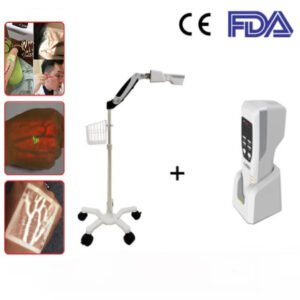The use of vein finders in Oncology and Chemotherapy Administration
Oncology is a branch of medicine that specializes in the diagnosis and treatment of cancer. It includes medical oncology (the use of chemotherapy, hormone therapy, and other drugs to treat cancer), radiation oncology (the use of radiation therapy to treat cancer) and surgical oncology (the use of surgery and other procedures to treat cancer).
“A short peripheral intravenous catheter or cannula (PIVC) is frequently used to deliver chemotherapy in oncology practice. Although safe and easy to insert, PIVCs do fail, leading to personal discomfort for patients and adding substantially to treatment costs. As the procedure of peripheral catheterization is invasive, there is a need for greater consistency in the choice, insertion and management of short PIVCs, particularly in the oncology setting where there is a growing trend for patients to receive many different courses of IV treatment over a number of years, sometimes with only short remissions.”
As the procedure of peripheral catheterization is invasive, there is a need for greater consistency in the choice, insertion and management of short PIVCs. This is particularly relevant in oncology, with the growing trend for patients to receive many different courses of IV treatment over a number of years, sometimes with only short remissions.
For this reason, the use of a Vein Finder is highly recommended for oncology and chemotherapy, especially for youngsters, patients with darker pigmented skin, or with veins that move…
Using the SIFVEIN-5.2 can aid staff within the oncology unit to find the right vein during patient treatment. Nurses can simply hold the device above the skin and the veins are easily identified on the surface of the skin. Easy to use, these vein finders can significantly minimize patients’ discomfort and saves valuable time for both nurses and patients.
References: Special donation at George Eliot Hospital supporting oncology patients , Improving outcomes of short peripheral vascular access in oncology and chemotherapy administration, National Cancer Institute



